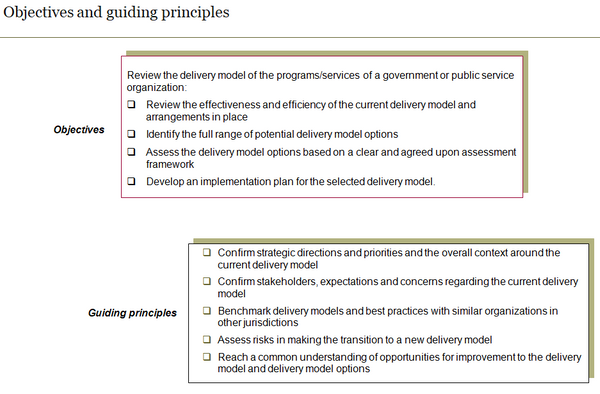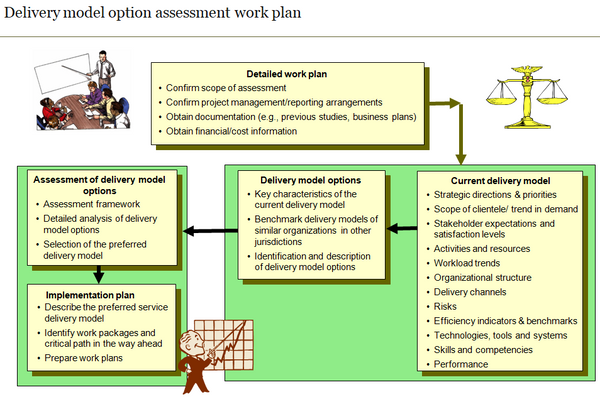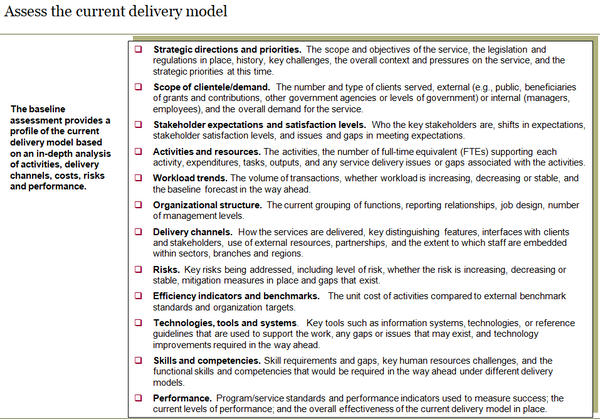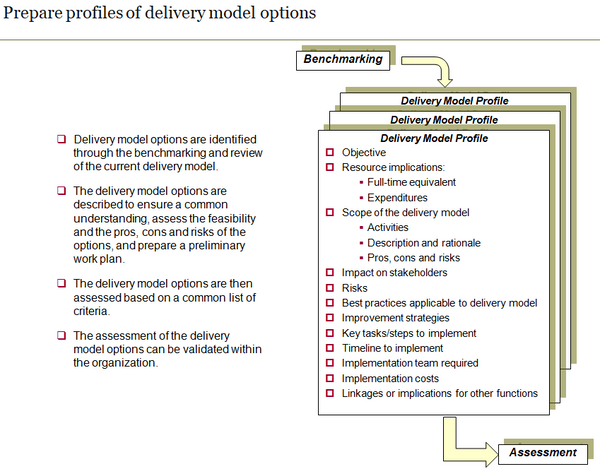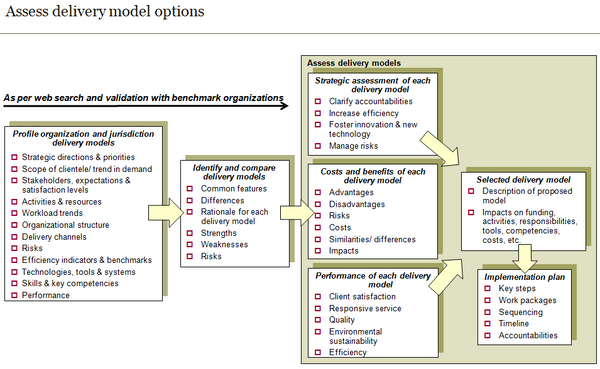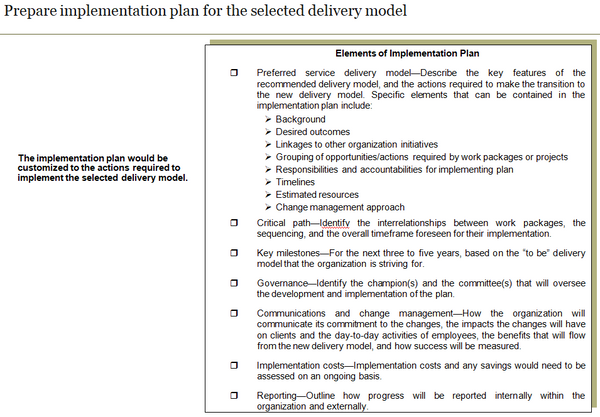Information Management Delivery Model Option Assessment (8 slides)
Determine how to deliver the information management (IM) function within your government agency.
IM delivery model assessment toolkit
The information management (IM) delivery model option assessment tool (8 slides in PowerPoint) provides a work plan to assess delivery model options for the information management function. The slides (see preview charts) include:
- A checklist to help assess the current delivery model
- Examples of delivery model options for the IM function
- The typical contents of the profiles used to describe the delivery model options
- An assessment approach
- Outline of an implementation plan to move to the selected delivery model.
When you purchase the toolkit, you will receive an email with a link to download the Information Management Delivery Model Option Assessment Tool (8 slides in a PowerPoint editable format), as well as the Delivery Model Option Assessment Guide (12 pages in Word).
IM delivery model options
Examples of delivery model options for information management include:
-
Decentralized— IM advisors reporting to the corporate head of information management provide primarily strategic advice. IM advisors reporting at the regional or sector/branch level provide strategic and operational IM advice, and support local IM applications.
-
Mixed— The corporate IM group provides functional direction, establishes policies/standards, advises senior management on the overall IM strategy, and supports corporate IM applications. IM advisors in branches/ sectors/ regions provide operational IM support.
-
Corporate delivery model— The corporate IM group delivers all IM support on behalf of sectors/ branches/ regions; some corporate IM advisors reporting centrally are dedicated to larger sectors/branches/ regions.
Key service delivery management considerations--Information management
Key considerations in designing the IM delivery model include:
- The size of the organization and variety of programs delivered
- Document management technology used
- Extent of electronic filing
- Client/ stakeholder expectations of IM
- Consistency of IM practices across the organization
- Information security requirements
- The role of the corporate IM group
- The involvement of sectors, programs and regions in providing IM advice and support and managing IM applications
- The reporting relationships of IM staff.







